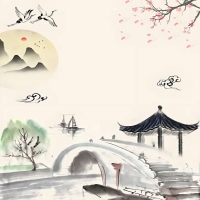风水寻龙视频是当今许多风水爱好者和学习者获取知识与技巧的重要途径。通过视频,观众可以直观地了解风水寻龙的理论基础、实际操作步骤以及常见误区,从而提升自己的风水技能。风水寻龙,源自中国古代的地理堪舆学,主要研究山脉的走势、水流的方位以及地气的聚集点,旨在寻找所谓的“龙脉”,即地气旺盛、适合居住或安葬的吉地。这一学问不仅涉及自然环境的观察,还包括阴阳五行、八卦九宫等复杂理论,因此学习起来颇有难度。借助风水寻龙视频,学习者可以打破时空限制,反复观看大师的讲解和演示,从而更深入地掌握精髓。
风水寻龙视频通常以生动的视觉形式呈现内容,包括实地拍摄的山脉地形、水流 patterns,以及动画模拟的地气流动。这种多媒体方式使得抽象的风水概念变得具体易懂。视频中可能会展示如何识别“来龙去脉”——即山脉的起源和走向,这是寻龙的关键步骤。通过高清镜头,观众可以清晰地看到山脊的起伏、峡谷的深浅,以及水流的缓急,这些都是判断龙脉的重要指标。视频还会讲解“点穴”技巧,即确定最佳位置的方法,涉及土壤质量、植被覆盖和周围环境的影响。这些内容如果仅靠文字描述,可能会显得晦涩,但视频通过实地案例和专家解说,让学习者仿佛亲临其境,更容易吸收知识。
风水寻龙视频 often 包含 practical tutorials and step-by-step guides. For instance, a video might demonstrate how to use a罗盘 (luopan, or Chinese compass) to measure directions and angles, which is essential in feng shui for aligning with the natural energy flows. Viewers can learn how to interpret the readings and apply them to real-world scenarios, such as selecting a site for a home or a grave. This hands-on approach is particularly valuable for beginners who might struggle with theoretical concepts. Additionally, many videos feature interviews with experienced feng shui masters who share their insights and anecdotes, providing a richer understanding of the cultural and historical context behind feng shui xun long. These personal stories not only educate but also inspire viewers to appreciate the depth of this ancient art.
Moreover, 风水寻龙视频 addresses common misconceptions and challenges. For example, some people might believe that feng shui is purely superstitious, but videos often debunk such myths by explaining the scientific principles behind it, such as geomancy and environmental psychology. They also highlight potential pitfalls, like misinterpreting landforms or neglecting local climate factors, which could lead to poor feng shui outcomes. By watching these videos, learners can avoid common errors and develop a more nuanced approach. Furthermore, the video format allows for interactive elements, such as quizzes or comment sections, where viewers can ask questions and receive feedback from experts or the community. This fosters a collaborative learning environment, enhancing the overall educational experience.

In terms of content depth, a typical 风水寻龙视频 might cover topics like the classification of dragon veins (e.g., rising dragon, coiling dragon), the influence of water bodies on energy flow, and the integration of feng shui with modern architecture. Videos may also compare different schools of thought within feng shui, such as the Form School and Compass School, helping viewers understand the diversity of practices. This comprehensive coverage ensures that learners gain a well-rounded perspective, from basic principles to advanced techniques. Additionally, many videos include recommendations for further study, such as books or courses, encouraging continuous learning.
However, it's important to note that not all 风水寻龙视频 are created equal. Viewers should seek out content from reputable sources, such as certified feng shui practitioners or educational institutions, to ensure accuracy. Misinformation can lead to incorrect applications, which might have negative consequences in real life. Therefore, critical thinking and cross-referencing with other resources are advised when using these videos as a learning tool.
In conclusion, 风水寻龙视频 serves as a powerful medium for disseminating knowledge about feng shui xun long. It makes complex concepts accessible, provides practical guidance, and fosters a deeper appreciation for this traditional Chinese practice. Whether you are a novice looking to explore the basics or an advanced learner seeking to refine your skills, these videos offer valuable insights that can enhance your understanding and application of feng shui. By leveraging visual storytelling and expert commentary, they bridge the gap between ancient wisdom and modern learning methods, ensuring that the art of feng shui continues to thrive in the digital age.




 相关阅读
相关阅读












